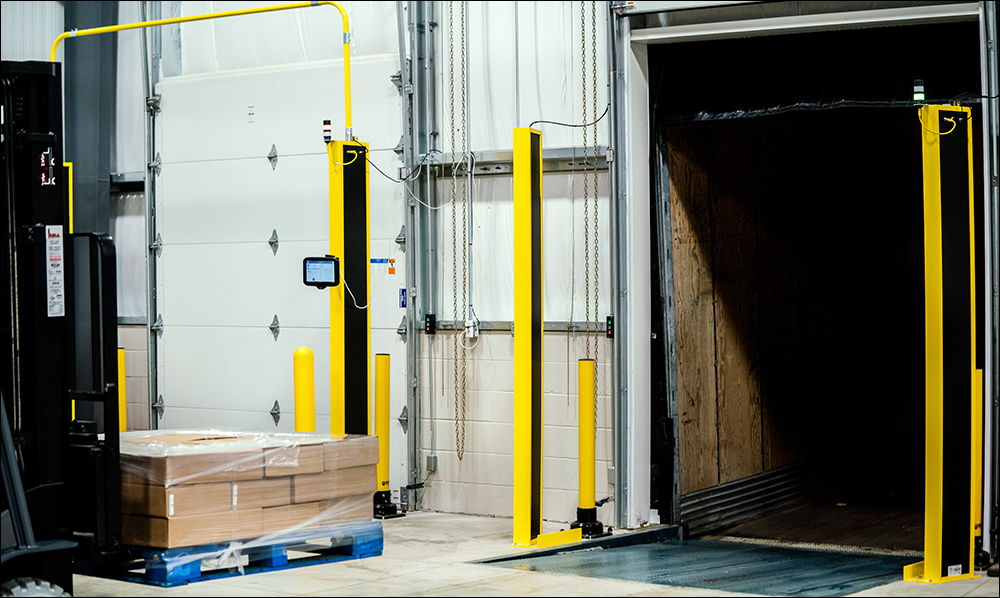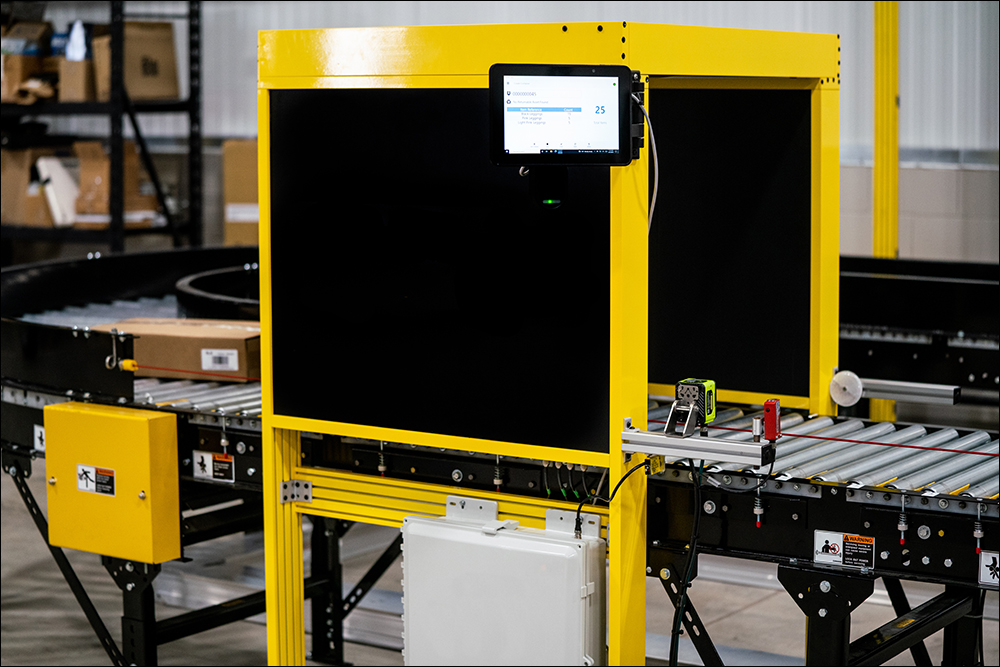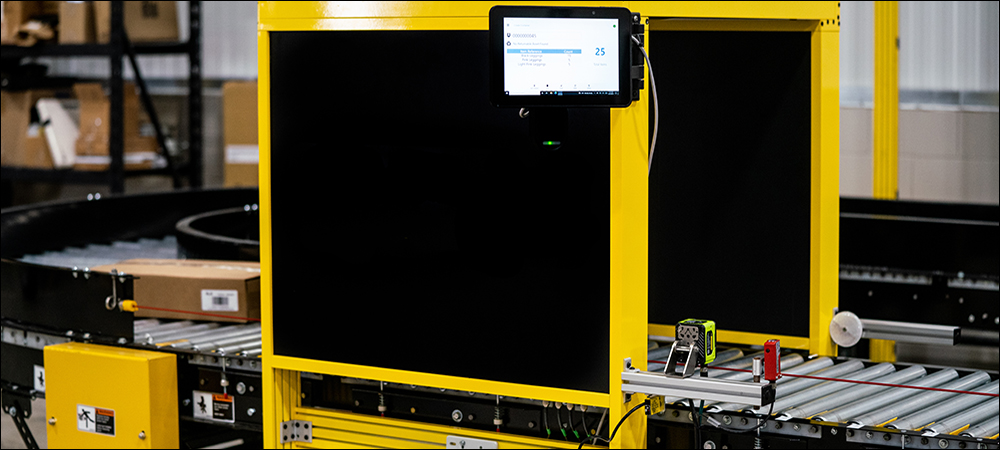With an aim toward providing easier deployment of radio frequency identification systems for solution providers, or for companies new to RFID, Zebra Technologies has released four new readers, each targeting a different set of applications, but all offering integrated antennas. Commercially released this week are the company’s Transition RFID Portal for dock doors, Wall-Mount RFID Portal for carpeted spaces, Fixed RFID Tunnel for conveyers and Integrated RFID Table reader for sorting, packing and compliance workflows.
The portfolio of readers is intended for asset and workflow management, as well as traceability and compliance applications in warehouses, pharmaceutical manufacturing plants and retail backrooms, the company reports. All four readers are single units intended to be mounted or bolted into place, plugged into an Ethernet cable, and then put to use. The devices leverage existing Zebra reader products, along with a newly developed, specialized antenna that can read optimally without requiring configuration, according to Matthew Seltz, Zebra Technologies’ general manager of location solutions.

The devices can be installed and maintained via Zebra’s RFID PartnerConnect program, by which users can seek out the company’s partners to efficiently deploy the technology at dock doors, on conveyers, near doorways, in hallways, in storage rooms and on forklifts. The system leverages Zebra’s MotionWorks software layer. Many of the company’s potential customers and partners face what Seltz calls “a perfect storm of challenges” that demand technology like the latest readers.
A growing number of businesses now require RFID due to omnichannel sales pressures, while labor shortages compound that need. To address the needs of both new and existing RFID users, as well as their solution providers, Seltz says, Zebra strives to make deployments easier. “What we’ve been finding is that to expand and to grow our fixed reader footprint,” he states, “we had to provide more ease-of-use implementation at a low cost of ownership.”
The first of the four products, the Transition RFID Portal, is designed for use in warehouse environments, primarily at dock doors, to automate and improve the efficiency of previously manual data capture. The Power-over-Ethernet (POE) device is integrated into a portal covering a dock door, bolted into the floor and plugged into an Ethernet connection. The reader can capture tag reads at any orientation without requiring separate installation or antenna configuration. When tagged items are brought within range, the readers capture their tag ID numbers and use the MotionWorks enterprise software to forward data to either a private or hosted cloud-based server. The data can also be managed on a dedicated server located onsite.

The Wall-Mount RFID Portal is fully enclosed and can be mounted near doorways, in storage rooms or in office hallways to track a variety of assets, such as IT devices, pharmaceutical items and retail inventory. It is designed to be more aesthetically pleasing than reader portals in warehouse environments, Seltz says, so it can be installed in places that are public or office-based. Use cases could include retail or other workspaces where companies might need to track the movements of individuals, assets or goods.
The Fixed RFID Tunnel, designed for use on conveyors, includes a reader configuration with integrated antennas for tunnel reading. The reader can be bolted over a conveyor that transports tagged goods, such as cartons of products, and can read tags to confirm what is in those cartons, and that they were properly packed. In this way, Seltz says, the reader can monitor workflow, validate boxed products and improve shipping accuracy. The device can capture thousands of individually tagged items as they pass through the tunnel as part of a conveyor system, can verify tag reads after they have been printed and applied, and has been optimized to fit above a typical conveyor.
Finally, the Integrated RFID Table consists of a fixed reader mounted within a custom-built table. The unit is designed for such processes as sorting, packing and compliance workflows. One common application, the company reports, would be tracking activity related to specimen and lab-based processing. The specimens, for example, could be detected by the reader, then workers could automatically validate the work they do, as well as prevent any errors. The workstation replaces what previously might have required a reader attached to an existing countertop, a configuration of antennas sitting on top, and wires to connect the antenna to the reader. Now, Seltz says, RFID tag reading can be employed more seamlessly.

Matthew Seltz
Some companies are piloting or deploying the readers to be used complimentarily. For instance, a manufacturer could use the Fixed RFID Tunnel to capture data regarding product assembly or packaging, and to identify anything that might need to be re-processed or inspected. The Integrated RFID Table could then be used to capture a read of that item as it arrived at the appropriate station, in order to address any problems.
Zebra’s goal, Seltz says, is to make it possible to introduce RFID into environments in which deployment had been excessively costly or difficult in the past. Whether the technology is used in healthcare, manufacturing or retail environments, he adds, the greatest challenge has simply been to put in the necessary network drops for the PoE connection. “We can make the rest of the journey as easy as plugging the reader in,” he explains, “and it just starts talking to the network.”
Last year, Zebra released a reader-management update for its software platform layer known as MotionWorks, enabling solution providers to more easily build a full solution using fixed Zebra readers. With MotionWorks, the company cab provide not only reader management, but also data filtering, before forwarding information to a solution provider’s applications. MotionWorks and the new integrated portals, Seltz says, are part of the company’s mission to make it easier for its partners and end customers to deploy RFID.
Seltz predicts the technology will eliminate the need for many companies to conduct proofs-of-concept. “We know the technology works,” he states. The question now, he says, is how to quickly deploy the readers and support them for an entire enterprise. In the past, there has been a challenge around testing out the technology in the specific environment in which it is deployed. “Solution providers would have acquired components separately from us, and the assembler would have had to figure out how to best position them and how to install them.” They would also need to determine how to maintain the technology and ensure it continued to work properly over time.
Zebra continues to sell its predecessor products, the company reports, while its new products are aimed at applications that have been tried and proven and are now in replication mode. The devices come at a time when manufacturers and other businesses are ramping up their RFID use or are introducing the technology to meet omnichannel sales requirements, as well as to provide products during worker shortages.
At warehouses, manufacturing facilities and other sites, the challenge is to meet the demand of a changing market. In many cases, Seltz says, there is more volume of goods flowing through sites, with fewer hands to manually process those goods and verify shipment accuracy. Such companies, he adds, require an RFID system that they can roll out quickly. Companies in the logistics, manufacturing and retail industries are already deploying all four of the integrated reader products, Seltz says.


